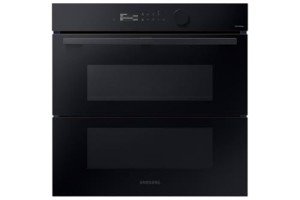Do Not Buy Into These "Trends" About Self Cleaning Oven Reviews

Self-Cleaning Oven Reviews: A Comprehensive Guide for Modern Kitchens
In the ever-evolving landscape of cooking area technology, self-cleaning ovens have become a revolutionary device, promising benefit and efficiency for home cooks and busy households alike. This article delves into various models, features, advantages, and considerations for buying a self-cleaning oven. Furthermore, at the end of this short article, an area will address frequently asked questions to supply more clarity for prospective purchasers.
What is a Self-Cleaning Oven?
A self-cleaning oven is a home appliance equipped with an automated cleaning function that uses heats or specialized cleaners to get rid of baked-on food and grease. This gets rid of the requirement for harsh chemical cleaners and decreases the time invested scrubbing.
Different Types of Self-Cleaning Technologies
Pyrolytic Cleaning
- This method involves heating up the oven to very high temperatures (around 900 ° F or 500 ° C) to incinerate food residues into ash, which can be easily cleaned away.
Steam Cleaning
- This technique makes use of steam to loosen up grime. It involves a lower temperature operation than pyrolytic cleaning, often making it a gentler option for the oven.
Soak Cleaning
- Some ovens use a soak cleaning method where particular cleaning functions enable the application of cleaners followed by a soak duration to break down tough stains.
Key Features to Look for in a Self-Cleaning Oven
When searching for a self-cleaning oven, customers must think about several features:
- Cleaning Cycle Duration: The length of self-cleaning cycles can differ; usually, pyrolytic cycles last about 3 to 6 hours, while steam cleaning cycles can take about 30 to 90 minutes.
- Control Type: Choose between manual knobs or digital panels for ease of use and features like delayed start.
- Safety Features: Look for included safety features such as door locks during the cleaning cycle to prevent unexpected openings.
- Oven Type: Decide if you prefer a wall oven, range, or a double oven setup, which can offer extra cooking area.
- Energy Efficiency: Check for energy ratings to guarantee you are picking an eco-friendly alternative.
Below is a comparison of some popular self-cleaning oven models available in the market:
| Brand & & Model | Cleaning Method | Oven Capacity | Cost | Secret Features |
|---|---|---|---|---|
| GE Profile PTSI9100SNSS | Steam Cleaning | 30" | ₤ 1,899 | Wi-Fi connectivity, True European convection |
| Whirlpool WOS51EC0HS | Pyrolytic | 30" | ₤ 1,499 | Sensor cooking, self-cleaning cycle options |
| Samsung NV51K6570SS | Pyrolytic | 30" | ₤ 1,799 | Double convection, smart control |
| Frigidaire FGEF3036RF | Pyrolytic | 30" | ₤ 1,399 | Easier to tidy enamel, air fry feature |
| KitchenAid KODE900ESS | Pyrolytic | 30" | ₤ 2,299 | Even-Heat technology, gliding oven racks |
Benefits of Self-Cleaning Ovens
Self-cleaning ovens supply multiple benefits:
- Time-Saving: The self-cleaning feature saves users hours invested scrubbing and scraping.
- Less Harsh Chemicals: These ovens need limited or no chemical cleaning agents, making it safer for the family and the environment.
- Enhanced Hygiene: Regular cleaning assists keep a sanitary cooking environment, getting rid of remaining food particles that can end up being breeding grounds for germs.
- Efficiency: High-temperature cleaning guarantees an extensive cleaning, often outshining manual cleaning efforts.
Drawbacks of Self-Cleaning Ovens
While self-cleaning ovens boast numerous benefits, they are not without drawbacks:
- Energy Consumption: The high-temperature cleaning cycles can lead to substantial energy use.
- Heat Emission: The process can heat up the kitchen, which may not be ideal in warmer months.
- Long Wait Times: The cleaning cycle can take numerous hours, and the oven stays locked till it cools down, delaying cooking strategies.
- Initial Cost: Self-cleaning ovens typically come at a higher price point than standard ovens.
Regularly Asked Questions (FAQs)
1. Self Cleaning Oven Options -cleaning ovens safe to utilize?
Yes, self-cleaning ovens are created with precaution, such as door locks throughout the cleaning process to avoid accidents. However, Self Cleaning Oven Durability might discharge smoke or smells, so appropriate ventilation is suggested.
2. How frequently should I use the self-cleaning function?
It is usually suggested to make use of the self-cleaning feature every couple of months, depending upon use. More regular use might be required for sturdy cooks.
3. Can you manually clean up a self-cleaning oven?
Yes, you can by hand clean a self-cleaning oven using traditional cleaning methods; nevertheless, this defeats the function of the self-cleaning feature.
4. Is there a distinction in cleaning effectiveness in between steam and pyrolytic cleaning?
Both techniques work, but pyrolytic cleaning is typically more comprehensive, as it incinerates food residues at a heat, while steam cleaning loosens grime for simpler wipe-down.
5. Do self-cleaning ovens utilize more electrical power?
Yes, due to the heats needed for self-cleaning cycles, these ovens can consume more electrical energy compared to routine cooking.
In summary, self-cleaning ovens use considerable benefits, consisting of benefit, efficiency, and improved health in the cooking area. Nevertheless, prospective purchasers must weigh the advantages versus the drawbacks, such as energy consumption and greater upfront costs. With various options available in the market today, those considering a self-cleaning oven have actually many models customized to fit various cooking needs and spending plans. As technology continues to advance, these ingenious devices will likely grow in popularity, making kitchen maintenance much easier than ever.

